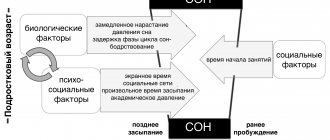Mental retardation (DMD) in children is due to the fact that the process of emotional and mental perception of the world around them is disrupted.
From a physiological point of view, children with mental retardation may be completely healthy, but their mental or emotional functioning suffers. The child behaves as if he is much younger than his age. Despite the fact that the name of the disease uses the word “delay”, which implies its temporary nature, this is a rather formidable diagnosis. Without timely correction, it leads to more complex and severe disorders: memory, attention, speech, the formation of thought processes, and the ability to social adaptation suffer. Mental retardation is often combined with delayed speech development (SDD). This diagnosis is usually made in children aged 2 to 8 years.
If mental activity is impaired, the child is usually calm and shy, but has difficulty learning new skills and knowledge. When emotional development is inhibited, it is difficult for him to concentrate attention, follow the rules of behavior, and control emotions.
What is mental retardation
Mental retardation refers to insufficient maturity of the emotional-volitional sphere, as well as a tempo disturbance in the development of mental processes in a child.
With this pathology, mental functions such as thinking, memory, and attention are less developed for the child’s specific age, and their indicators lag behind generally accepted norms. ZPR is a condition in which disturbances in the emotional-volitional as well as intellectual sphere occur, which are reversible and can be successfully corrected. According to statistics, mental retardation occurs in approximately 17% of children. Since this condition may be based not only on psychological and pedagogical reasons, but also on organic disorders in the body, CPR is considered by child neurology, as well as pediatrics.
Since 1997, mental retardation has ceased to be considered a medical diagnosis, but the term itself has remained and is currently used as a pedagogical characteristic of a child.
Elements of autism in SPD
Violation of the functionality of the central nervous system and past infectious complicated diseases affect not only speech, but also the development of the baby’s psyche. In 5% of cases, autistic symptoms are diagnosed:
- Does not have emotional contact with others, does not attempt to communicate with parents. Almost doesn't smile.
- Aggression is often directed at oneself. Attacks of aggression are regular.
- Monotonous, repeating behavior is a stereotype.
- He uses toys in his own way.
- Avoids peers.
In 50% of cases, they do not understand how to address themselves. Such children are treated by several specialists.
Reasons for delay
Two main groups of reasons have been identified.
Social reasons:
- Lack of proper attention from adults, hypoprotection.
- Lack of communication with peers and adults, long-term isolation from society.
- Insufficient creative and mental activity.
- Overprotection, as a result of which the child does not strive to become independent.
- Raising a child by authoritarian parents who do not take into account the wishes and opinions of the child. The punishment of a child in such a family is often disproportionate to the guilt, as a result of which the child becomes anxious and withdrawn, he develops fears, against which mental development is delayed.
Biological causes of the prenatal period include: severe pregnancy, during which the mother suffered a severe infection, trauma, as well as alcohol intoxication, fetal hypoxia, polyhydramnios, prematurity, difficult childbirth, as well as Rh conflict between the child and mother.
After the birth of a baby, the following reasons can provoke the development of mental retardation:
- Congenital speech defects, hearing and vision impairment.
- Previous somatic diseases.
- Pathologies of the cardiovascular system.
- Organic brain lesions.
- Traumatic brain injuries.
Also, experts do not exclude a hereditary factor. If one of the parents was diagnosed with mental retardation in childhood, there is a high risk that a similar condition may develop in the child, despite the complete absence of other risk factors during pregnancy and after childbirth.
Clinical picture
Parents should be aware of the main symptoms of mental retardation characteristic of a particular age.
1 year
CPR is not diagnosed at 1 year of age. But a number of alarm bells may indicate a tendency towards it:
- Compared to his peers, the baby began to hold his head up, sit up, crawl, turn, stand up, walk, walk late;
- does not hold objects well;
- cannot coordinate movements;
- moves little;
- unemotional.
In this case, it is necessary to take into account the individual developmental characteristics of the baby and, if in doubt, consult a pediatrician or neurologist.
2 years
Deviations are indicated by:
- ignorance of one's own name;
- lack of response to the simplest questions;
- profuse drooling;
- sleep disorders;
- moodiness, tearfulness, irritability, aggression;
- difficulty maintaining attention on a specific subject.
3 years
- Poor vocabulary (no more than 20 words);
- speech defects;
- lack of basic understanding of the surrounding world (cannot name animals, household items, body parts);
- inability to formulate coherent speech;
- difficulty completing basic tasks;
- undeveloped imagination;
- uniformity of actions in the game;
- inability to concentrate;
- fast fatiguability;
- aggressiveness, hysteria.
4 years
At 4 years of age, mental retardation is already clearly diagnosed based on specific symptoms.
Physical:
- weak muscle tone;
- kinetosis;
- urinary disorders;
- headache;
- fatigue, weakness, lethargy, immobility.
Cognitive:
- inability to speak coherently;
- poor vocabulary;
- absent-minded attention;
- poor memory;
- inability to remember information visually or auditorily;
- lack of basic knowledge about the world;
- lack of formation of cognitive motivation.
Social:
- aggressiveness, distrust, wariness towards others;
- isolation, autism, self-absorption;
- reluctance to participate in joint games;
- infantilism;
- mood changes.
It is at the age of 4, with timely recognition of mental retardation, that corrective work must begin. In its absence, all these symptoms only increase and deepen at 5-6 years of age. Secondary signs appear: psychosomatic diseases and internal complexes develop, cognitive abilities deteriorate, and social maladaptation is observed.
At primary school age, mental retardation manifests itself more clearly. Such children differ from their peers in behavior and learning abilities. If parents and kindergarten teachers missed this moment and sent such a child to school, the teacher can no longer help but pay attention to this. He needs to master the minimum standard program, without which he cannot transfer such a student to another class. Therefore, at this stage, a medical-pedagogical commission is organized, a diagnosis is made and psycho-correctional work begins.
Classification and symptoms of delay
There are different options for classifying mental retardation, but experts often resort to the Lebedinskaya classification.
What types of ZPR exist:
- Psychogenic. The main reason is raising a child in negative conditions.
- Somatogenic. The reason is insufficient development of the central nervous system, which was a consequence of diseases suffered at an early age. If a child is in the hospital for a long period of time, there is no communication with peers, which also causes communication problems. Such children are inhibited and fearful, have insufficient memory capacity, and are hyperactive.
- Constitutional. The processes of development of the central nervous system slow down, as a result of which gaming activity significantly prevails over cognitive activity. The child’s behavior no longer corresponds to his age, inattention develops, and memory deteriorates.
- Cerebral-organic. The type of ZPR that occurs most often. The main reason is primary organic brain damage. Children with this type of mental retardation are often inhibited, they lack lively emotions, and their imagination is poor.
What causes the disease?
Due to abnormal development of the brain and central nervous system.
- During pregnancy, the mother was ill. Intrauterine developmental disorder due to infections, poisoning, trauma.
- Intrauterine hypoxia.
- Rapid or complicated labor, injury to the newborn.
- In infancy, he suffered from severe infectious diseases that caused complications on the brain and was injured.
- Genetic or chromosomal diseases that disrupt the structure of the brain.
- Upbringing under strong guardianship or abandoned “to the wind”, cruel treatment. Growing up in an antisocial family.
- He suffered a terrible trauma from a psychological aspect.
In addition, there are a number of diseases that cause psycho-speech delay. Among them, epilepsy is in second place, and in the first place is an abnormality and metabolic disorder in the central nervous system. It is important to treat both the PRD and the underlying cause.
Features of children with mental retardation
In children with mental retardation, intellectual development practically does not suffer, but this condition still affects:
- Attention. It becomes short-term and superficial. During the learning process, a child is often distracted and finds it difficult to concentrate on a specific task.
- Memory. The material being studied is absorbed selectively, and the child remembers visual images better than auditory ones.
- Perception. The child may have difficulties in the process of forming visual images. When teaching, it is important to take into account that such children are better able to master material using visual aids.
- Speech. The child’s vocabulary is poor, and problems with the pronunciation of certain sounds are possible. The child has difficulty constructing complex sentences, so his speech is simplified.
- Thinking. In the absence of adult help, the child is not capable of abstract logical thinking. It is difficult for him to make comparisons, difficulties arise with constructing his mental conclusions, as well as drawing conclusions.
- Emotional sphere. Children with mental retardation often follow the lead of their peers, as they do not have the ability to take the initiative. They are also prone to sudden mood swings.
Diagnosis of mental retardation and methods of correction
To diagnose mental retardation in a child, it is necessary to consult several specialists who can confirm or refute this condition. This is a speech therapist, defectologist, psychologist, neurologist, pediatrician, and also a psychiatrist.
To diagnose CPR, the following is necessary:
- Detailed history taking.
- Carrying out CT, MRI, as well as an encephalogram, the results of which may indicate the presence of physiological reasons for the possible development of mental retardation.
- Conducting a psychological and pedagogical examination, during which the child’s ability to think and play activities is established. A diagnosis of memory, attention, as well as the emotional-volitional sphere of the child is carried out.
- Detailed examination of speech features.
If, as a result of studies, diagnostics, and consultations, this condition is confirmed, the baby needs corrective measures. Treatment is complex and requires the involvement of a whole group of different specialists. In the learning process, an emphasis on repetition, frequent changes of activities, and visualization of educational materials is important.
What is important to pay special attention to in the process of correctional work:
- An increase in the number of cognitive processes.
- The emotional sphere of the child, which is normalized as a result of active activities in a playful way.
- Normalization of speech activity, which is possible during regular speech therapy classes.
Treatment
Practice shows that children with mental retardation may well become students in a regular general education school, rather than in a special correctional school. Teachers and parents must understand that the difficulties in teaching such children at the very beginning of their school life are not at all the result of their laziness or carelessness: they have objective, quite serious reasons that must be overcome together. It is difficult for parents to accept the fact that their child, due to his developmental characteristics, will learn more slowly than other children. But this needs to be done to help the little schoolchild.
Working with children with mental retardation requires an integrated approach and the participation of pediatricians, child neurologists, child psychologists, psychiatrists, speech therapists, and speech pathologists. Correction of mental retardation should begin in preschool age and be carried out over a long period of time.
Children with mental retardation must attend specialized preschool educational institutions or groups, Type VII schools or correctional classes in general education schools. Peculiarities of teaching children with mental retardation include the dosage of educational material, reliance on clarity, repeated repetition, frequent change of activities, and the use of health-saving technologies.
When working with such children, special attention is paid to the development of cognitive processes (perception, attention, memory, thinking); emotional, sensory and motor spheres using play therapy and other modern methods. Correction of speech disorders in mental retardation is carried out by a speech therapist in individual and group classes. Together with teachers, correctional work on teaching students with mental retardation is carried out by special education teachers, psychologists, and social educators.
Medical care for children with mental retardation includes drug therapy in accordance with identified somatic and cerebral-organic disorders, physiotherapy, exercise therapy, massage, and hydrotherapy.
Prevention of mental retardation
Prevention of mental retardation includes, first of all, a responsible approach to pregnancy planning. During the period of bearing a child, the mother should try in every possible way to avoid any negative effects on the fetus.
At an early age, the benefits of preventing infectious and various somatic diseases are undeniable. It is important to provide favorable living conditions for the child. If there is the slightest suspicion that a child is developing psychomotor processes, it is necessary to conduct an examination by specialists and promptly begin work to eliminate the condition.











